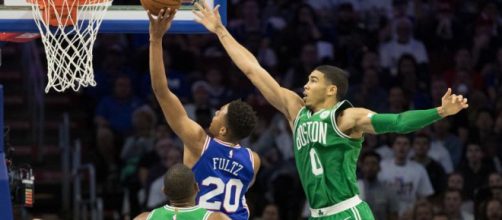The 2017 NBA Draft class was the youngest in history, exemplified by the fact the top seven selections were all college freshmen. The draft was also notable for the number of trades or draft positions that were determined by swapping picks. No bigger move was made than when the Boston Celtics traded the number one overall selection to the Philadelphia 76ers in exchange for the third overall pick and a future selection. Many experts had Washington guard Markelle Fultz as the premier player in the draft, leading some to criticize Celtics' General Manager Danny Ainge for passing on what was considered a franchise-altering player.
But nearly ten games into the 2017-2018 NBA season, Ainge is looking like a genius for moving down and taking Duke forward Jayson Tatum.
Here's how the top three picks have played up to this point
1. Markelle Fultz averaged 23.5 points and just under six assists per game in his 25 game college career, and that was enough to make him the consensus number one pick for many in the basketball world. Unfortunately, Fultz has not had much of a chance to prove his supporters right as a shoulder injury has limited him to only four games. He had been averaging six points in 19 minutes per game before the shoulder became impossible to play with and significantly affected the point guard's shooting mechanics.
It was most visible at the free throw line in what could best be described as an uncomfortable and unnatural shooting motion. Conflicting reports would later come out stating that Fultz first had fluid drained from his right shoulder but later say it was a cortisone injection. It has all added up to Futlz being sidelined indefinitely and another case of the 76ers dealing with an injury to a young prospect.
2. Lonzo Ball entered the draft surrounded by hype for off-court reasons just as much for anything he did on the court while at UCLA. The boisterous, over the top persona of his father Lavar Ball and the launch of the Big Baller Brand shoe line, had some worried that there was too much baggage attached to the 6'6" point guard with the funky shot.
Ball admitted all along he wanted to play for the Los Angeles Lakers, but his dream got off to a nightmarish start in his first NBA game. He shot 1-6 and finished with just three points. However, he bounced back the next game by scoring 29 points in a win over the Phoneix Suns. On the season Ball is averaging nine points, six rebounds and six assists per game but has struggled from distance, shooting just 28% on threes.
3. Jayson Tatum came into the draft with perhaps the most polished offensive game. His length combined with his ability to shoot and get to the basket made him a target for Ainge in coach Brad Stevens' system. After Gordon Hayward's devastating injury opening night, Tatum found himself with a bigger workload than he and the Celtics anticipated.
For his part, he has responded by averaging 13.8 points per game while playing over 32 minutes a night. Playing alongside Kyrie Irving, Al Horford, and Jaylen Brown has helped accelerate Tatum's development, and the Celtics find themselves with the best record in the NBA.
2016 first overall pick Ben Simmons making a case for Rookie of the Year
After a broken foot cost Philadelphia 76ers guard Ben Simmons the entire 2016-2017 season, he has returned fully healed and seems poised to take the rookie honors in his first official season. He's averaging 15.8 points, 9.6 rebounds, and 7.9 assists per game, all tops among rookies. Add that to a 53% shooting percentage and 1.5 steals per game, and it's clear why 76ers fans are so excited after "trusting the process" for so long.
Other players making an early mark in the league include Lauri Markkanen of the Chicago Bulls and Kyle Kuzma of the Los Angeles Lakers. Markkanen, the seventh overall pick, is averaging an impressive 17.2 points and 9.3 rebounds per game for an otherwise dismal Chicago team with only one win of the season. And while all the attention in Los Angeles has been on Ball, the 27th overall pick Kuzma has been putting up the better numbers. He's averaging 15 points per game on 54% shooting from the field and 33% from beyond the arc.


